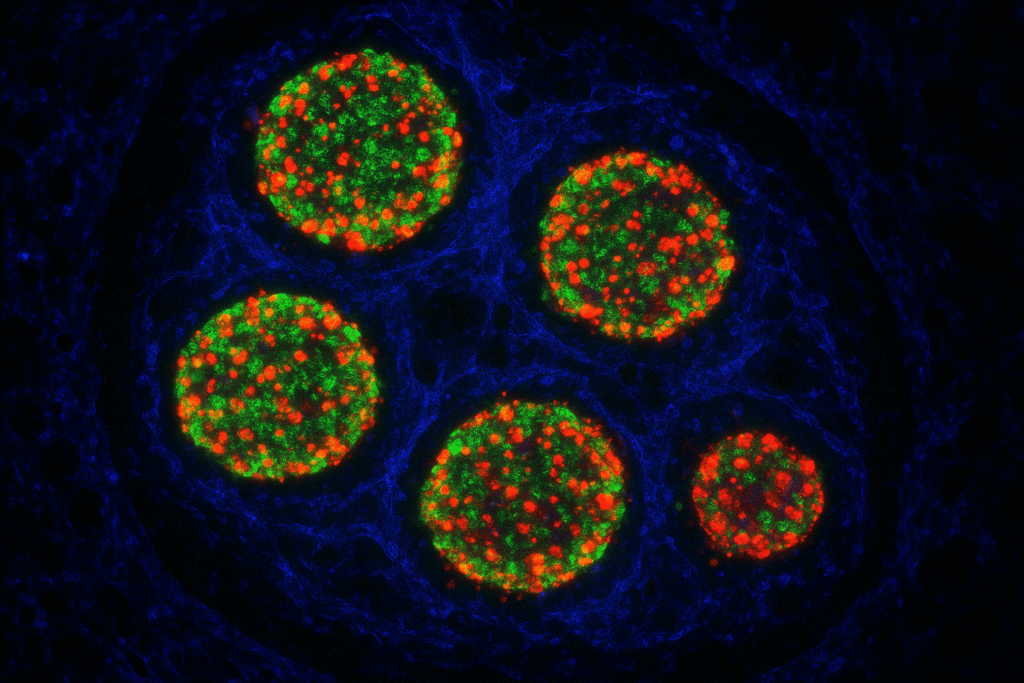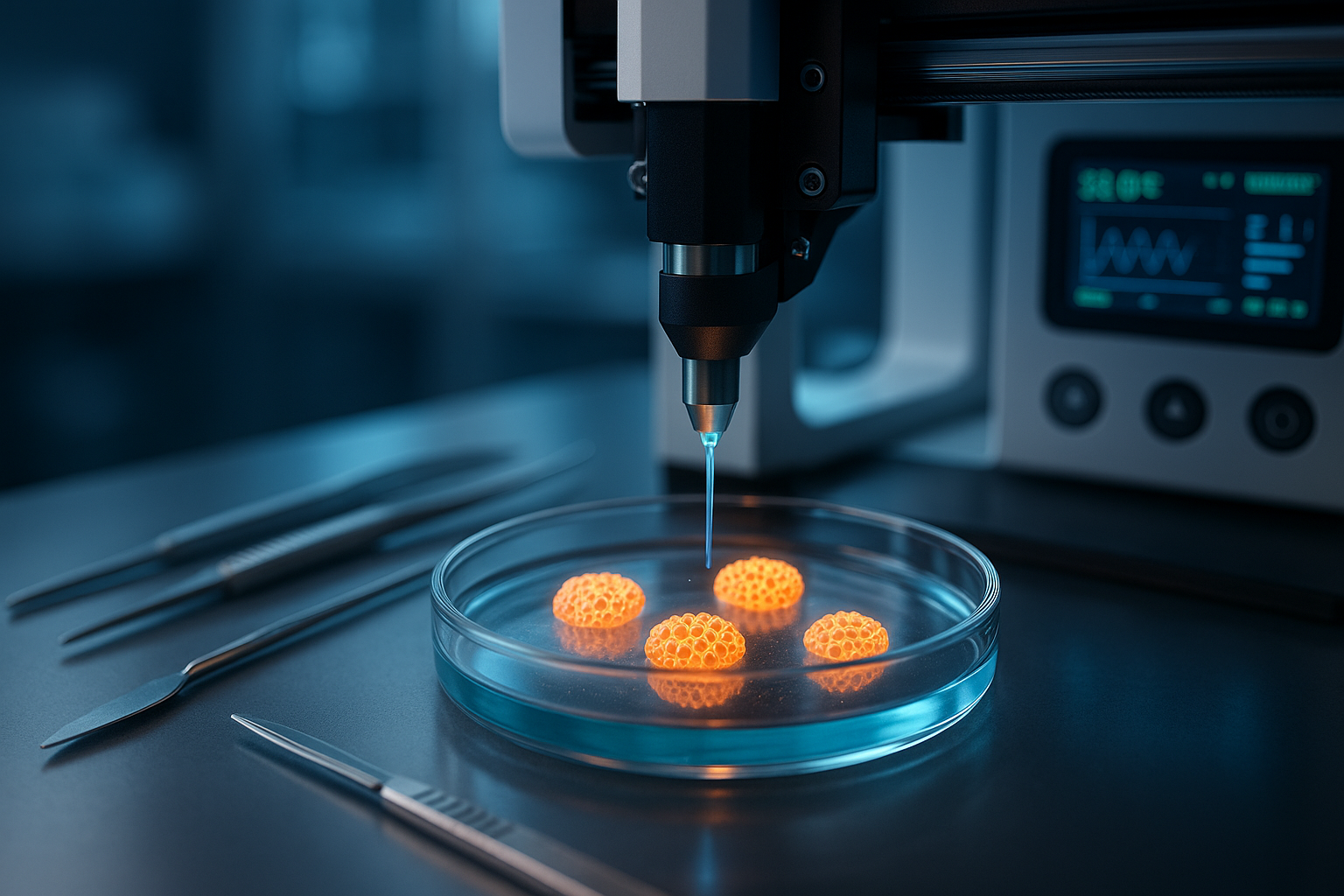Type 1 diabetes (T1D) is a condition where the body’s immune system attacks the cells in the pancreas that make insulin, a hormone that controls blood sugar. This means people with T1D need insulin injections or pumps to stay healthy. About 1.6 million Americans live with T1D, and finding better treatments is a big focus for scientists. One promising idea is transplanting insulin-producing cells, called islets, but this has challenges like the body rejecting the new cells or the cells not working well over time. A new study offers an exciting solution using 3D bioprinting to create islet structures that could change how we treat T1D.
The Breakthrough: 3D Bioprinting Islets
Scientists at Wake Forest Institute for Regenerative Medicine have developed a way to “print” human islet cells into structures that act like tiny pancreases. They used a special material called a bioink, made from alginate (a seaweed-based gel) mixed with a substance from human pancreases called decellularized extracellular matrix (dECM). This bioink mimics the natural environment of the pancreas, helping the islet cells stay healthy and work properly.
Here’s what they found:
Healthy Cells: The bioprinted islets stayed alive (over 85% survival) for 21 days in lab tests, even when packed tightly together. This is important because tightly packed cells usually struggle to survive.
Insulin Production: The printed islets responded to sugar by releasing insulin, just like a healthy pancreas. They performed better than non-printed islets, which started to weaken after a week.
Safe Printing: The team fine-tuned the printing process to avoid damaging the delicate islet cells, using gentle pressure (30 kPa) and slow speed (20 mm/min).
Natural Support: The dECM in the bioink acted like a cozy home for the islets, helping them stay functional longer by mimicking their natural surroundings.
This method could make it easier to produce large amounts of islet cells for transplants, potentially helping more people with T1D.
Why This Matters
Transplanting islet cells isn’t new, but it’s tricky. The body often rejects the new cells, and the cells can die from stress or lack of nutrients. Current methods also struggle to make enough cells for many patients. This 3D bioprinting approach tackles these problems by:
Protecting Cells: The alginate bioink shields islets from the immune system, which might reduce the need for drugs that suppress immunity.
Keeping Cells Happy: The dECM provides a natural setting that helps islets stay alive and produce insulin.
Scaling Up: The printing process can create many islet structures quickly, making it easier to treat more people.
This could lead to a future where T1D patients get long-lasting islet transplants with fewer complications, reducing their reliance on insulin shots.

What It Means for the Future
This study is a big step toward creating a “bioartificial pancreas” that could act like a real pancreas inside the body. The bioprinted islets could be used in transplants or even as lab models to test new T1D drugs. The next steps include testing these printed islets in animals and eventually humans to see if they work as well in the body. Scientists also want to improve the bioink to make it even better at protecting cells from the immune system.
5 Tips to Support Your Pancreatic Health
While science moves forward, you can take steps to keep your pancreas healthy, especially if you’re managing T1D or want to support your overall health:
Eat Smart
Choose foods like vegetables, berries, and whole grains that don’t spike blood sugar, giving your pancreas a break.
Stay Active
Do 30 minutes of exercise, like walking or biking, most days to help your body use insulin better.
Drink Water
Aim for 8–10 glasses of water daily to keep your body’s systems, including your pancreas, running smoothly.
Manage Stress
Try relaxation techniques like deep breathing or meditation to lower stress hormones that can affect blood sugar.
Sleep Well
Get 7–8 hours of sleep each night to help your body regulate blood sugar and support pancreatic health.
The Future of T1D Therapy
This study marks a significant step toward a clinically translatable bioartificial pancreas. By combining scalable 3D bioprinting with dECM-enriched bioinks, it overcomes key barriers in islet transplantation. Ongoing efforts should optimize bioink formulations (e.g., reducing MVG viscosity to minimize shear stress) and test in vivo efficacy to ensure long-term functionality and immune evasion. This platform could also inform related fields, such as mitochondrial medicine, given the role of beta-cell metabolism in T1D (linking to your interest in mitochondrial health, July 1, 2025).
References & Further Reading
bioRxiv Preprint: 3D Bioprinting of Human Islets for T1D
Shapiro AMJ, et al. (2000). “Islet Transplantation in Seven Patients with Type 1 Diabetes.” NEJM.
NIH Type 1 Diabetes Facts: https://www.niddk.nih.gov/health-information/diabetes/overview/what-is-diabetes/type-1-diabetes

